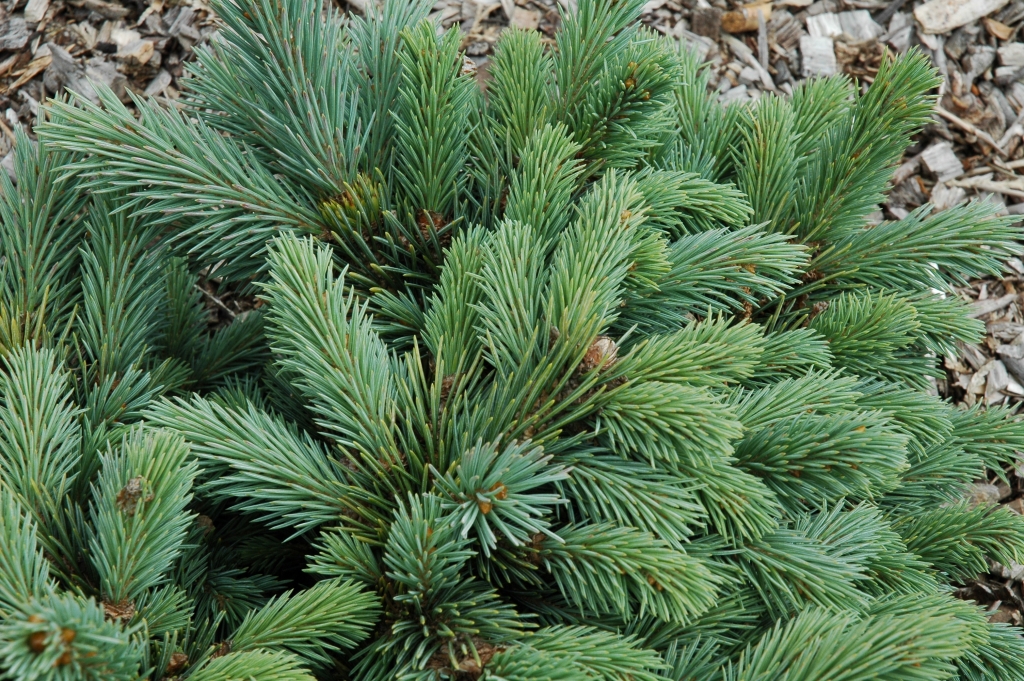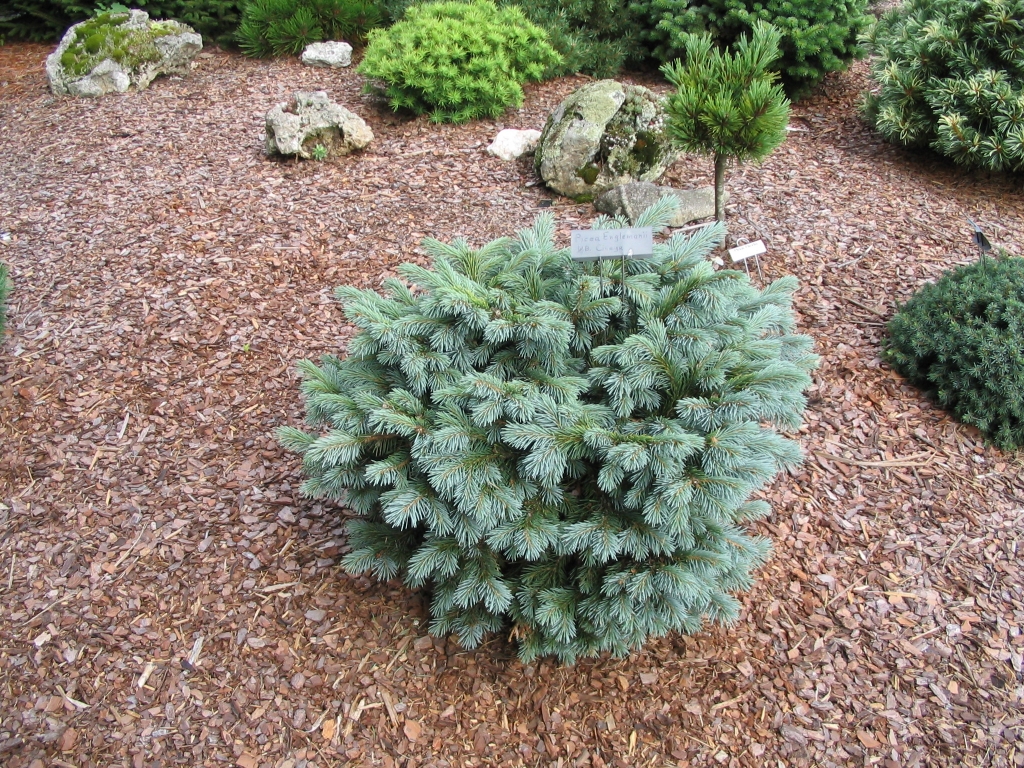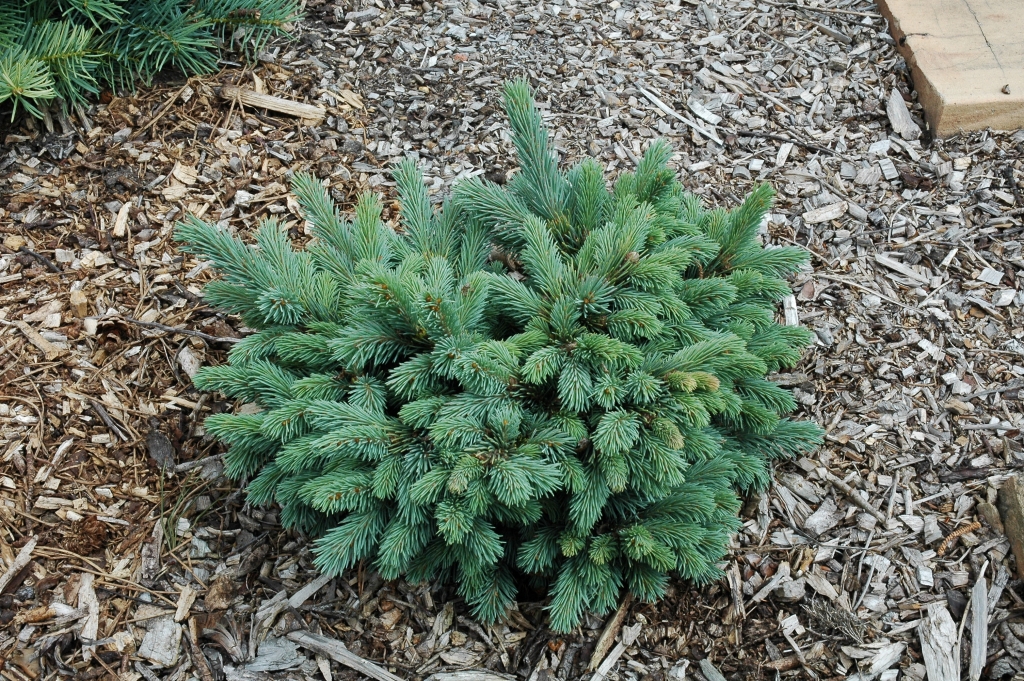Picea engelmannii 'Cienega' is a globose to flattened-globose selection of Engelmann spruce with powder-blue-gray foliage and a more-or-less layered branching structure that makes it distinguishable from many similar plants. After 10 years, a specimen will be considered mature at 12 inches (30 cm) tall and 18 inches (45 cm) wide, a rate of growth of 1 to 1.5 inches (2.5 - 4 cm) per year.
This cultivar originated as a witch's broom found by Colorado's renowned broom hunter, Jerry Morris. He found the original broom north of Hanagan Meadow, on the east side of the State Route 666 in east-central Arizona. Jerry described the broom as being in the "lower part of tree, 10-12'™ tall, 6-8'™ wide, tight and Blue." He originally assigned it the provisional name, Picea engelmannii [#14]. Purists will typically list the Jerry Morris selections in the following way, Picea engelmannii 'Cienega' #14.
This cultivar name is famous for being misspelled; the most common of which is 'Ceniega.' One must only look up the definition of cienega, "a spring that is usually a wet, marshy area at the foot of a mountain, in a canyon, or on the edge of a grassland where groundwater bubbles to the surface. Often, a cienega does not drain into a stream, but evaporates, forming a small playa. The term cienega is used in English in the southwestern United States." From this definition, it can be assumed that this is the type of terrain where Jerry encountered the witch's broom.


